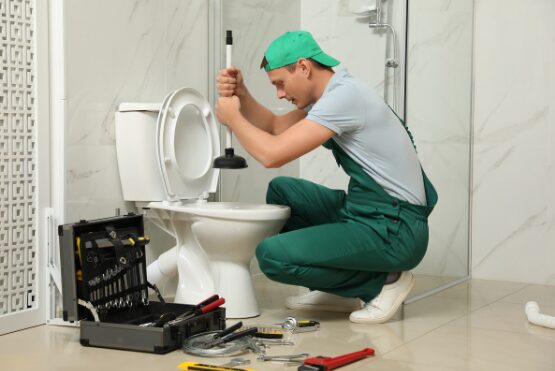What to Do If You Experience a Sewage Backup

Sewage backup basics: stay safe first
A sewage backup brings contaminated water into living spaces, so safety is step one. Cut power to affected rooms if you can do so safely, keep kids and pets away, and avoid skin contact until the source is controlled.
Stop the source and block off drains
- Stop water use in the home and remove drain stoppers to relieve pressure.
- If one fixture is overflowing, avoid flushing or running water anywhere else.
- For multi‑fixture backups in Garden Grove or Westminster, call a licensed plumber immediately.
Document and triage what can be saved
- Photograph damage before moving items, then separate porous contents like carpet and cardboard.
- Hard, non‑porous surfaces may be cleaned and disinfected; porous items exposed to Category 3 water are usually discarded.
Cleanup steps after a sewage backup
- Use proper PPE (gloves, boots, eye protection, mask) and ventilate well.
- Extract standing water, remove affected drywall and baseboards, and disinfect contact surfaces.
- Dry the space completely with fans and dehumidifiers; monitor for odors that indicate hidden moisture.
When professional remediation is essential
Widespread contamination, crawlspace impacts, or repeated backups require pro tools and containment. A camera inspection can confirm whether roots, collapsed pipe, or a main line blockage caused the event.
Takeaway: Prioritize safety, stop the source, and clean thoroughly—then address the cause so it doesn’t return. Schedule reliable help with Plumbing Squad, LA & OC.
Key Takeaways
- Understand the essentials of you experience a sewage backup so you can act quickly and avoid damage.
- Use safe, proven methods first; avoid shortcuts that create bigger problems.
- Prevent issues with routine maintenance and timely upgrades.
- Know when to call a professional to save time, money, and stress.
Immediate Actions
- Ensure safety: avoid electrical hazards and contaminated water.
- Stop the source: shut off water or cover openings.
- Begin extraction and drying within 24–48 hours to prevent mold.
Insurance & Documentation
Photograph everything before cleanup, track receipts, and contact your insurer early. Professional mitigation helps validate your claim and reduce secondary damage.
Drying & Restoration
Certified pros use moisture meters, air movers, and dehumidifiers to dry structural materials to target levels, then repair or replace damaged finishes.
FAQs
How can I prevent you experience a sewage backup?
Start with routine maintenance: inspections, cleaning, and replacing worn parts before they fail. Address small issues early, use quality fixtures, and follow manufacturer guidelines. A yearly whole‑home check by a pro helps catch problems before they turn into you experience a sewage backup.
Can DIY fixes make you experience a sewage backup worse?
Yes. Using the wrong chemical, tool, or technique can damage pipes, fixtures, or finishes, and often pushes the problem deeper. Stick to safe methods and call a pro when you hit resistance, smell sewage, or see leaks.
When should I call a professional plumber for you experience a sewage backup?
Call right away if there’s active leaking, sewage odors, recurring clogs, no hot water, water stains, or you’ve tried basic steps without success. Emergencies include burst pipes, backflows, and any leak near electrical.
How much does it typically cost to address you experience a sewage backup?
Costs vary by scope, materials, access, and location. Expect a basic service call to start around a few hundred dollars, while larger repairs or replacements range higher. After an on‑site assessment, your plumber can provide a firm, written estimate.
Need a Reliable Plumber?
Plumbing Squad handles inspections, repairs, and emergency service with transparent pricing and clean workmanship. Call today or book service to get expert help fast.

